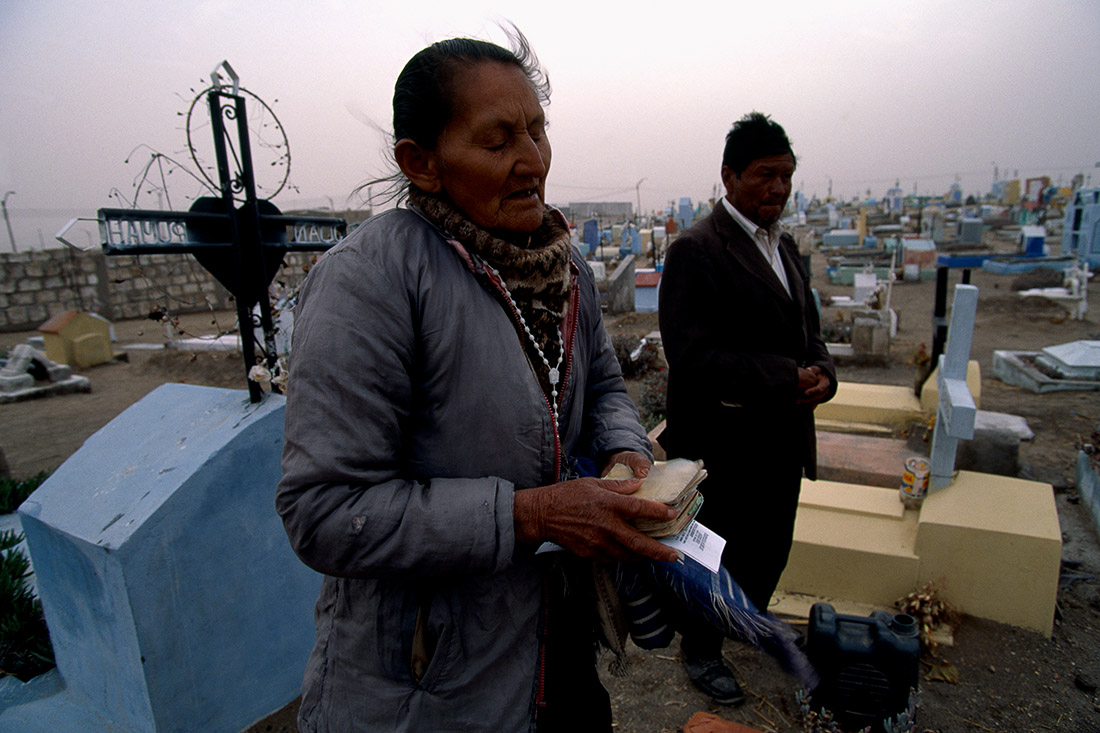Mourner in Arequipa
Eyes closed, contrite expression, prayer book in hand, and a rosary of white beads around her neck, this señora is praying before a small, modest tomb in the Arequipa cemetery built by the poor on a strip of sandy ground at the foot of the volcanoes. She is praying to ask God to forgive the sins the deceased may have committed in his lifetime, so that as quickly as possible his suffering soul can leave Purgatory and move on to Paradise to rejoice by the side of the divinity.
This señora does not know the person in the grave; she never saw him or heard anything about him when he was alive, and she will forget his name—which she just learned in order to pray and feel compassion for him with more conviction—almost as soon as she leaves the cemetery and the family of the deceased reward her with the modest payment she receives for her services.
It isn’t easy being a professional mourner. It demands purity of sentiments, deep piety, a broad familiarity with the Catholic ritual associated with death, and an excellent memory for remembering the prayers prayed for the dead. Also, an ability to identify emotionally with disconsolate family members who in mourning the loss of a loved one call on her tears and prayers to lend more prestige and dignity to their burials and wakes. This señora has all those attributes, and therefore she is much sought after. People come from great distances—some of them from the most important families–to the humble neighborhood where she lives in a her hut with no running water or electricity, to solicit her services. She does not sell anyone short. Besides asking for the name of the deceased, she often asks for a photograph, in order to know the person, to value him and to feel she is a friend, so that her tears at the wake and her prayers at the cemetery will flow with greater sincerity, like an expression of deep and authentic grief.
This señora’s heart is as big as Misti, the majestic volcano whose tremors rock Arequipa.

